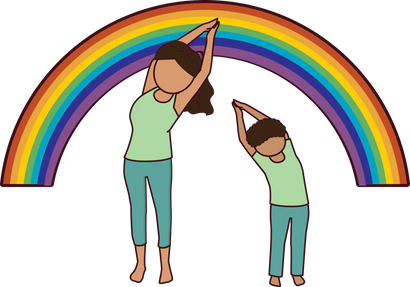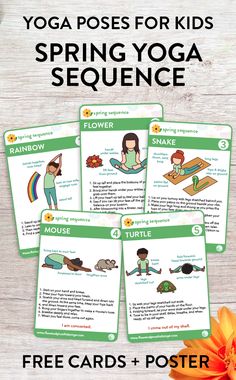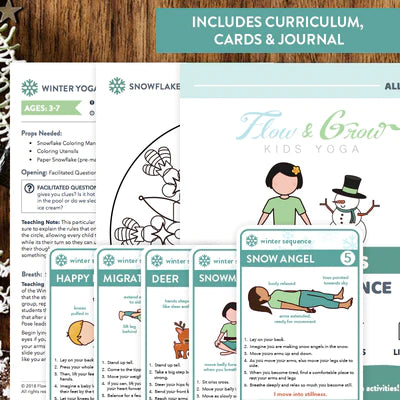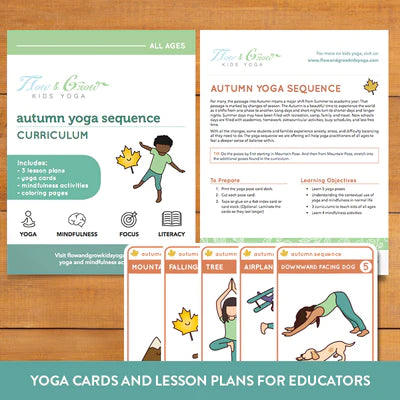Your Cart is Empty
22% off Automatically at checkout when you spend $5 of more!
22% off Automatically at checkout when you spend $5 of more!

#Selfcaresaturday: Finding stillness through structure
by Lara Hocheiser November 13, 2020 3 min read

Close your eyes for a second (if comfortable for you and not dangerous). Imagine someone meditating. What do you see? Likely someone seated cross-legged, with their hands in a certain shape and rested on their thighs, maybe even humming a certain vibrational tone. This certainly is meditation for some people at some times. Yet meditation is simply structured mindfulness -- a use of a particular technique or tool to reach a certain state of mindfulness. We like to think of this as big “M” mindfulness, versus little “m” mindfulness -- which is simply bringing a mindful quality to everyday activities: washing hands, eating, walking, and even just breathing.
For many people, that image of a cross-legged yogi humming a chant comes with a mental and emotional idea that meditation is too complex and too difficult for them. Yet it doesn’t have to be inaccessible, even for young children, if structured and presented in an accessible, straight-forward way. Remember, “meditation” just means a set, codified approach to mindfulness, and that structure doesn’t need to be complicated! That is particularly meaningful with young ones; presenting structured mindfulness in an accessible, fun way (yes, it can even be fun) could make a big difference in their well-being and development, and even begin a life-long affinity for mindfulness (with all of the benefits that brings!).
Check out our guide for a simple Three-Step Meditation (ages 3 and up)!
Healthychildren.orgshares how with children more and more busy all the time, breaks to refocus and recenter are important -- one reason among others that the American Academy of Pediatrics (or AAP) recommends that children regularly practice of structured mindfulness.Forbes Health Writer Alice G. Walton details additional evidence for the benefits of meditation for kids, on various measures (such as school performance, social/emotional skills, coping with difficult home situations and more). Interestingly, one study showed that meditating together as a family makes these benefits even stronger.
Putting it into action:
- Parents/Caretakers:Pin up the Three-Step Meditation in your child’s (or childrens’) bedroom(s) or playroom(s), and practice it with them 1-3 times a day. Doing it as a transition, such as before cleaning up for a meal or settling in to do schoolwork, can be effective. Who knows, they may like it so much that they ask for it more! Try to minimize outer distractions (a TV or radio on, for example) while practicing. Notice how they respond in the moment and in the longer-term.
- Teachers: Pin up the Three-Step Meditation in your classroom -- maybe a few of them in separate locations, if it’s a large one. Doing it as a transition, such as before switching subjects or traveling together as a class to another location, can be effective. Practice it together as a class 1-3 times a day. Who knows, your students may like it so much that they ask for it more! Try to minimize outer distractions (such as a messy classroom -- it might be helpful to have students do a quick clean-up of toys, books, and other materials first). Notice how your students respond in the moment and in the longer-term.
What’s coming next week?
Bringing a mindful approach to interacting with others can set kids up for a lifetime of healthier relationships, as well as just feel better for all involved.

Want to get in on the #selfcaresaturday fun? Subscribe now!
Let us know how it’s going!Tag us @flowandgrowyoga on instagram and use #selfcaresaturday when you post pictures or videos practicing! Or reply here to tell us about your experiences! Photos are always welcome!
Want to learn more about teaching mindfulness & self-care to children?
The Foundations of Children’s Yoga
Integrating Mindfulness into the School Day: This course explores how to practice little m mindfulness. Whether you are working in a school or not, this workshop will help you create a structure around mindfulness, breathing, and self-regulation in your work with children. Take it live online, or catch the replay
Self-Care for Children: In this course, we explore a framework for self-care for children, while examining your own practices. Take it live, or catch the replay!
95-hour Children’s Yoga Teacher Training
Products we Recommend
How to Integrate Mindfulness into the School Day
Empowerment Cards and Lesson Plan
Love and Compassion for Teens and Tweens
Spread the love!Share this blog post on social media so others can join in on the fun & benefit from #selfcaresaturday!
Leave a comment
Comments will be approved before showing up.
Also in Kids Yoga Blog

How Social and Emotional Learning and Yoga Help Kids Breathe Through Big Emotions
by Kane SEO April 21, 2025 4 min read
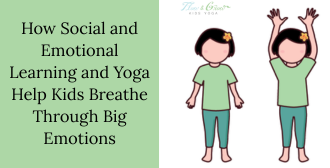
How Social and Emotional Learning and Yoga Help Kids Breathe Through Big Emotions
by Kane SEO April 14, 2025 4 min read
In classrooms and communities around the world, educators and parents alike are placing a growing emphasis onsocial and emotional learning. And for good reason: helping children understand, manage, and express their emotions in healthy ways is just as critical as teaching them to read or do math.

Power of Yoga for Kids: How It Helps Them Grow, Focus, and Thrive
by Kane SEO March 25, 2025 5 min read
In today’s fast-paced world, children are often exposed to stressors from a young age, whether it’s academic pressure, social challenges, or the overwhelming influence of digital devices. This can impact their physical, mental, and emotional well-being.
Ultimate Kids Year of Yoga Bundle
bundlespricey-contentdigital-resourcesearly-childhood-yoga-mindfulnesselementary-yoga-mindfulnesskids-yoga-resourcesmiddle-high-school-yoga-mindfulnessseasonal-yogayoga-cards
Ultimate Kids Year of Yoga Bundle
5 reviews
5.0 / 5.0
(5) 5 total reviews
$45.00
Ultimate Kids Year of Yoga Bundle
5 reviews
5.0 / 5.0
(5) 5 total reviews
$45.00
Kid’s Sun Salutation Yoga Cards
digital-resourcesearly-childhood-yoga-mindfulnesselementary-yoga-mindfulnesskids-yoga-resourcesliteracyunder-15yoga-cards
Kid’s Sun Salutation Yoga Cards
3 reviews
4.33 / 5.0
(3) 3 total reviews
$10.00
Kid’s Sun Salutation Yoga Cards
3 reviews
4.33 / 5.0
(3) 3 total reviews
$10.00
Yamas and Niyamas: Successful Relationships with Self & Others (tweens and teens)
pricey-contentdigital-resourceskids-yoga-resourceslesson-plansmiddle-high-school-yoga-mindfulnessmindfulness
Yamas and Niyamas: Successful Relationships with Self & Others (tweens and teens)
2 reviews
5.0 / 5.0
(2) 2 total reviews
$49.00$55.00
Yamas and Niyamas: Successful Relationships with Self & Others (tweens and teens)
2 reviews
5.0 / 5.0
(2) 2 total reviews
$49.00$55.00
